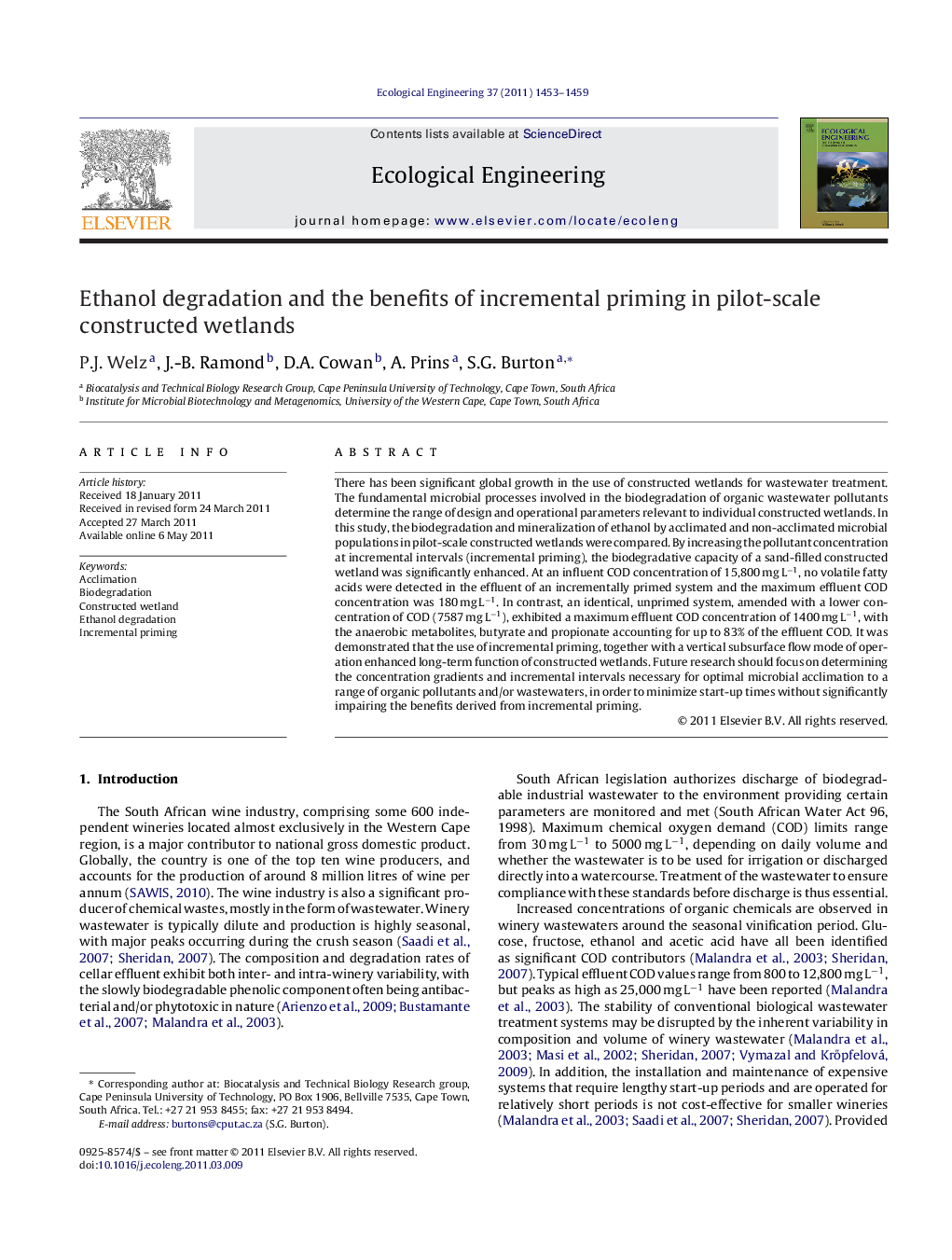| Article ID | Journal | Published Year | Pages | File Type |
|---|---|---|---|---|
| 4390265 | Ecological Engineering | 2011 | 7 Pages |
Abstract
There has been significant global growth in the use of constructed wetlands for wastewater treatment. The fundamental microbial processes involved in the biodegradation of organic wastewater pollutants determine the range of design and operational parameters relevant to individual constructed wetlands. In this study, the biodegradation and mineralization of ethanol by acclimated and non-acclimated microbial populations in pilot-scale constructed wetlands were compared. By increasing the pollutant concentration at incremental intervals (incremental priming), the biodegradative capacity of a sand-filled constructed wetland was significantly enhanced. At an influent COD concentration of 15,800 mg Lâ1, no volatile fatty acids were detected in the effluent of an incrementally primed system and the maximum effluent COD concentration was 180 mg Lâ1. In contrast, an identical, unprimed system, amended with a lower concentration of COD (7587 mg Lâ1), exhibited a maximum effluent COD concentration of 1400 mg Lâ1, with the anaerobic metabolites, butyrate and propionate accounting for up to 83% of the effluent COD. It was demonstrated that the use of incremental priming, together with a vertical subsurface flow mode of operation enhanced long-term function of constructed wetlands. Future research should focus on determining the concentration gradients and incremental intervals necessary for optimal microbial acclimation to a range of organic pollutants and/or wastewaters, in order to minimize start-up times without significantly impairing the benefits derived from incremental priming.
Related Topics
Life Sciences
Agricultural and Biological Sciences
Ecology, Evolution, Behavior and Systematics
Authors
P.J. Welz, J.-B. Ramond, D.A. Cowan, A. Prins, S.G. Burton,
